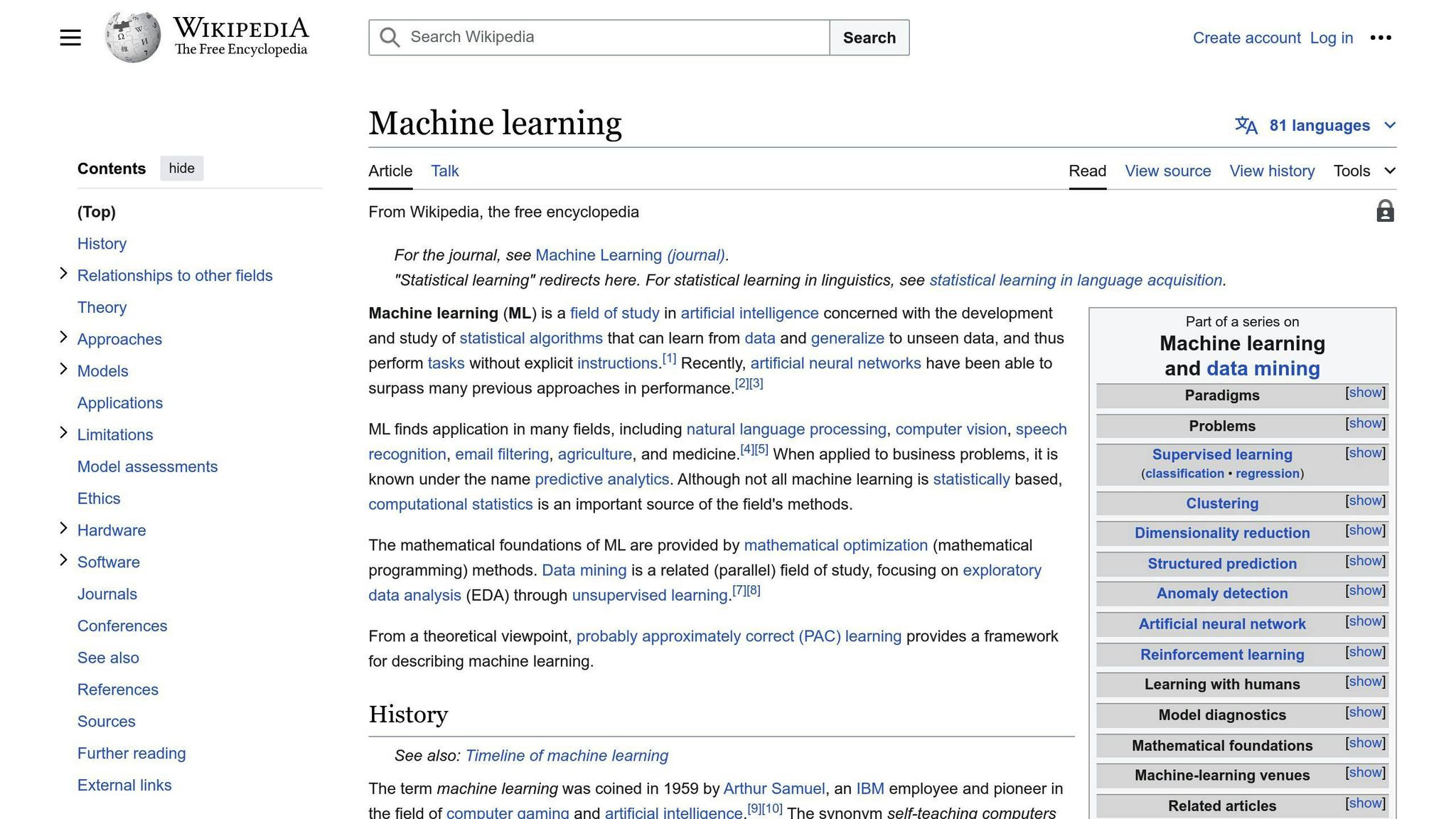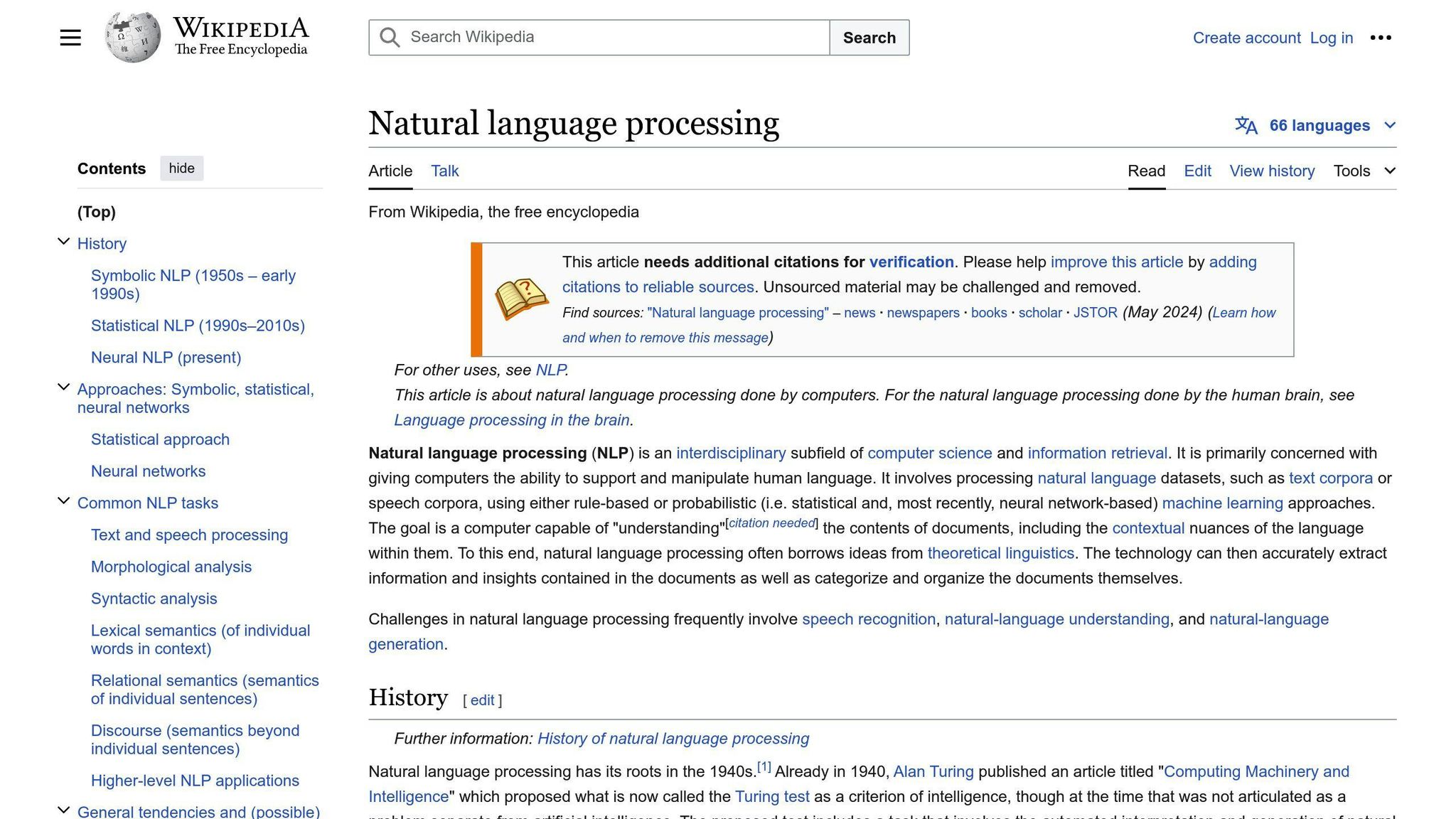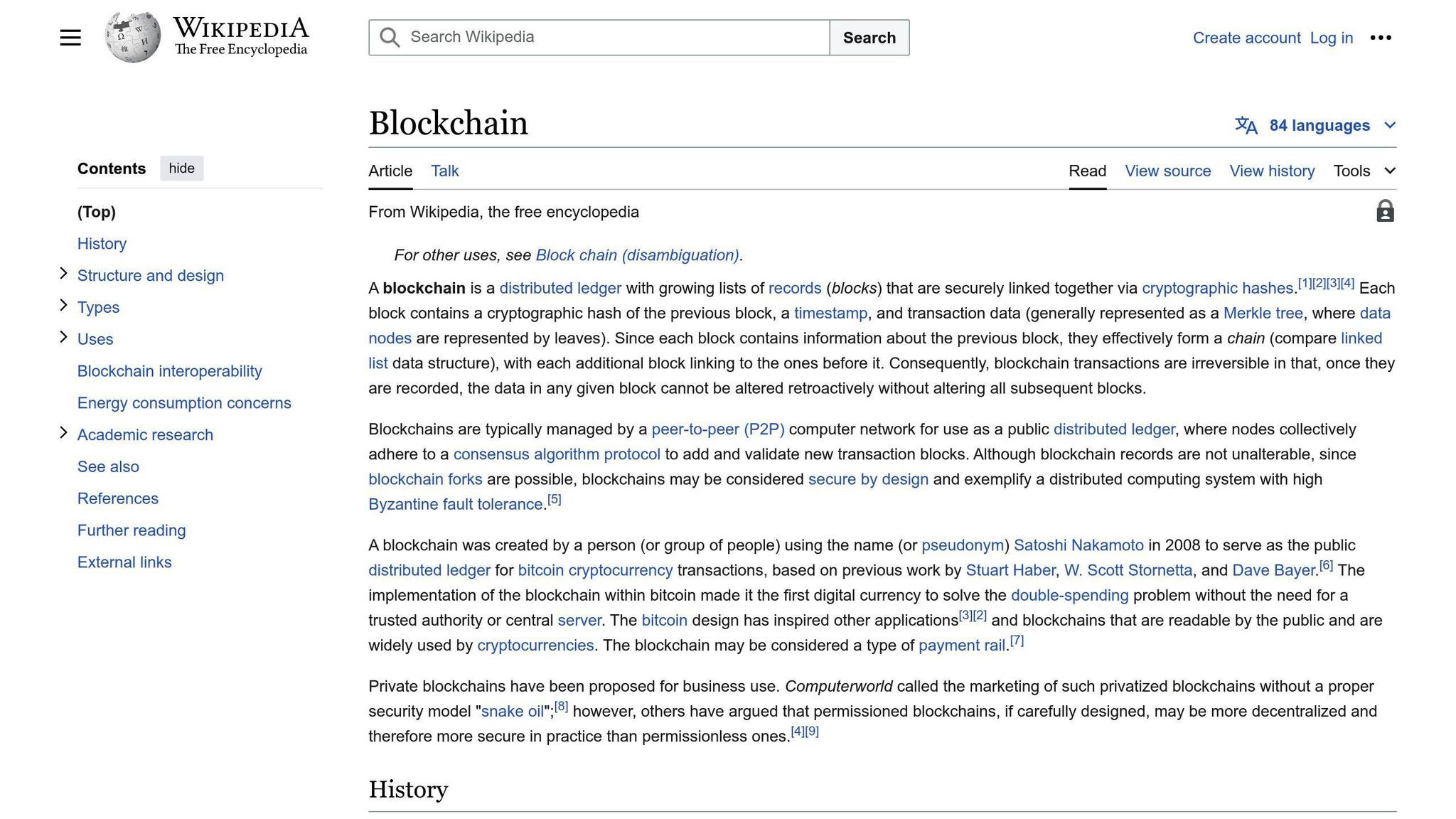AI Review Reliability: Accuracy & Spam Detection in 2024
Online reviews have become crucial for e-commerce, but the rise of fake reviews has eroded consumer trust. AI offers a powerful solution to detect and combat fake reviews, ensuring the integrity of online review systems.
Key Points:
- Fake Review Types: Paid, incentivized, malicious, and bot-generated reviews
- Impact: Lost trust, financial losses, and unfair competition
- Traditional Detection Methods: Manual checks, rule-based systems, and early machine learning models had limited effectiveness
AI-Powered Fake Review Detection
AI combines techniques like Natural Language Processing (NLP) and Machine Learning models to accurately identify fake reviews:
| Technique | Description |
|---|---|
| NLP | Analyzes text patterns, sentiment, and language models |
| Machine Learning | Uses algorithms like Logistic Regression, Random Forests, and Neural Networks |
| Combined Approaches | Integrates NLP and Machine Learning for enhanced accuracy |
Evaluating AI Accuracy
- Precision: Ratio of correctly detected fake reviews to total marked as fake
- Recall: Ratio of correctly detected fake reviews to total actual fake reviews
- F1-score: Balanced measure combining precision and recall
Future Directions
- Detecting AI-generated reviews through adversarial training and behavior analysis
- Collaboration between businesses and regulatory bodies for guidelines and penalties
- Blockchain and decentralized systems for secure, tamper-proof review storage and verification
Responsible AI use, transparency, and innovative technologies like blockchain are crucial for maintaining the integrity of online review systems and consumer trust.
Related video from YouTube
Understanding Fake Reviews
Fake reviews have become a widespread issue in online review systems, affecting both consumers and businesses. In this section, we'll look at the different types of fake reviews, why they are created, and their impact.
Types of Fake Reviews
Fake reviews can take various forms, including:
| Type | Description |
|---|---|
| Paid reviews | Reviews written in exchange for money or other incentives. |
| Incentivized reviews | Reviews written in exchange for free products, services, or other benefits. |
| Malicious reviews | Reviews written with the intent to harm a business or individual. |
| Bot-generated reviews | Reviews written by automated software or bots. |
Why Fake Reviews are Created
Fake reviews are often created for reasons such as:
- Product promotion: Businesses may create fake reviews to promote their products or services.
- Competitor sabotage: Businesses may create fake reviews to harm their competitors.
- Financial gain: Individuals may create fake reviews to earn money or other benefits.
Impact of Fake Reviews
The impact of fake reviews can be significant:
- Lost trust: Consumers may lose trust in online review systems and businesses.
- Financial losses: Businesses may experience financial losses due to fake reviews.
- Unfair competition: Fake reviews can create an unfair competitive advantage for businesses that engage in this practice.
Traditional Methods for Detecting Fake Reviews
In the past, various methods were used to identify fake online reviews. However, these approaches had limitations and were not always effective.
Manual Review Checks
One method involved human moderators reviewing reviews to identify fake ones. This process was time-consuming and labor-intensive, making it difficult to scale. Additionally, studies showed that humans could only correctly identify fake reviews less than 50% of the time.
| Approach | Accuracy |
|---|---|
| Human Moderation | < 50% |
Rule-Based Systems
Another approach involved using predefined rules to detect fake reviews. These rules checked for suspicious keywords, IP addresses, and reviewer behavior. While these systems could identify some fake reviews, they were limited. Sophisticated fraudsters could easily bypass the rules. Additionally, these systems sometimes flagged legitimate reviews as fake (false positives).
| Approach | Effectiveness |
|---|---|
| Rule-Based Systems | Limited |
Early Machine Learning

Early machine learning models analyzed review text to identify patterns indicating fake reviews. However, these models were basic and struggled to capture the complexity of fake reviews, leading to errors.
| Approach | Effectiveness |
|---|---|
| Early Machine Learning | Limited |
These traditional methods had drawbacks, highlighting the need for more advanced AI-powered approaches to combat the growing issue of fake reviews effectively.
AI-Powered Fake Review Detection
Detecting fake online reviews has become crucial. Traditional methods like manual checks and rule-based systems were ineffective. Advanced AI techniques offer a powerful solution to combat fake reviews and maintain trust in online review systems.
Natural Language Processing (NLP)

NLP analyzes text for patterns that indicate fake reviews:
- Sentiment Analysis: Identifies emotional tone and language used in reviews.
- Language Models: Trained on vast text data to recognize patterns and detect fake reviews.
Machine Learning Models
Machine learning models identify fake reviews based on textual and behavioral features:
- Logistic Regression: Analyzes features to detect fake reviews.
- Random Forests: Combines multiple decision trees for improved accuracy.
- Neural Networks: Learns from large datasets, improving accuracy over time.
| Machine Learning Model | Description |
|---|---|
| Logistic Regression | Analyzes textual and behavioral features to detect fake reviews |
| Random Forests | Combines multiple decision trees to improve accuracy |
| Neural Networks | Learns from large datasets and improves accuracy over time |
Combined AI Approaches
Combining NLP and machine learning techniques enhances fake review detection accuracy. Data preprocessing and feature engineering prepare data for machine learning models. By combining NLP and machine learning strengths, AI systems can detect even sophisticated fake reviews with high accuracy.
Challenges
While AI-powered fake review detection has progressed, challenges remain:
- Detecting AI-generated fake reviews
- Protecting against intentional attacks on AI systems
- Ensuring AI systems remain accurate and effective over time
Human oversight and continuous monitoring are essential for maintaining accuracy and effectiveness.
sbb-itb-be22d9e
Evaluating AI Review Detection Accuracy
Checking the accuracy and reliability of AI systems for detecting fake reviews is crucial to ensure they work well in maintaining trust in online review systems.
Accuracy Measures
To evaluate the performance of AI fake review detection systems, these accuracy measures can be used:
- Precision: The ratio of correctly detected fake reviews to the total number of reviews marked as fake (including genuine reviews incorrectly flagged as fake).
- Recall: The ratio of correctly detected fake reviews to the total number of actual fake reviews.
- F1-score: A balanced measure that combines precision and recall.
It's important to use diverse datasets and real-world testing to ensure the accuracy measures reflect the system's performance in various scenarios.
Comparing Detection Approaches
| Approach | Advantages | Disadvantages |
|---|---|---|
| Natural Language Processing (NLP) | Effective at detecting language patterns, easy to implement | Limited by language complexity, may miss sophisticated fake reviews |
| Machine Learning Models | Can learn from large data, improves accuracy over time | Requires extensive training data, may have biases from training data |
| Combined AI Approaches | Enhances accuracy by combining NLP and machine learning strengths | Increases complexity, requires careful integration of techniques |
Each approach has pros and cons. A thorough evaluation can help identify the most effective method for a specific use case.
Future Directions and Emerging Trends
As AI technology advances, detecting AI-generated fake reviews will become more challenging. To stay ahead, researchers and developers are exploring new techniques:
Detecting AI-Generated Reviews
- Adversarial training: Training AI models to generate fake reviews to improve detection algorithms.
- Behavior analysis: Analyzing user behavior and interaction patterns to identify suspicious activity.
- Multimodal analysis: Combining text analysis with image and audio analysis to detect inconsistencies.
Collaboration and Regulation
Combating fake reviews requires a collaborative effort:
- Governments and regulatory bodies must establish clear guidelines and penalties.
- Businesses can implement robust detection systems and share knowledge.
Blockchain and Decentralized Systems

Blockchain technology offers a promising solution for ensuring review integrity:
- Decentralized systems can provide a secure, transparent, and tamper-proof environment for storing and verifying reviews.
- This can help prevent fake reviews from being posted, rather than relying solely on detection algorithms.
| Approach | Description |
|---|---|
| Adversarial Training | Training AI models to generate fake reviews to improve detection algorithms |
| Behavior Analysis | Analyzing user behavior and interaction patterns to identify suspicious activity |
| Multimodal Analysis | Combining text analysis with image and audio analysis to detect inconsistencies |
| Collaborative Effort | Description |
|---|---|
| Government Regulation | Establishing clear guidelines and penalties for fake review perpetrators |
| Business Implementation | Implementing robust detection systems and sharing knowledge |
| Blockchain Solution | Description |
|---|---|
| Decentralized Systems | Providing a secure, transparent, and tamper-proof environment for storing and verifying reviews |
| Preventive Approach | Helping prevent fake reviews from being posted, rather than relying solely on detection algorithms |
Conclusion
Online reviews play a vital role in e-commerce, directly impacting consumer trust and purchasing decisions. However, the rise of fake reviews has created challenges, leading to the development of AI-powered detection systems. These systems have shown promising results in identifying and removing fraudulent reviews.
As AI technology advances, detecting AI-generated fake reviews will become more difficult. To address this, businesses and regulatory bodies must collaborate to establish clear guidelines and penalties for those creating fake reviews. Additionally, decentralized systems like blockchain technology can provide a secure and tamper-proof environment for storing and verifying reviews.
| Approach | Description |
|---|---|
| Collaboration | Businesses and regulatory bodies work together to establish guidelines and penalties for fake review creators. |
| Blockchain Technology | Decentralized systems provide a secure and tamper-proof environment for storing and verifying reviews. |
It is crucial to ensure responsible AI use in fake review detection, maintaining transparency and consumer trust. By combining collaborative efforts, regulatory measures, and innovative technologies like blockchain, we can work towards maintaining the integrity of online review systems.
FAQs
How does AI detect fake reviews?
AI uses a mix of techniques to identify fake online reviews:
- Machine Learning: AI models analyze review text and data to find patterns that indicate fake reviews.
- Natural Language Processing (NLP): NLP examines the language used in reviews to spot unusual phrasing, sentiment manipulation, and inconsistencies.
- Entity Recognition: AI can identify specific entities (people, places, products) within reviews to assess their authenticity.
- Anomaly Detection: AI looks for anomalies or red flags in reviews, such as suspicious text patterns or behavior.
Does Amazon AI detect fake reviews?
Yes, Amazon employs AI to detect and prevent fake reviews on its platform. Amazon's AI system is designed to stop:
- Hundreds of millions of suspected fake reviews
- Manipulated ratings
- Fake customer accounts
- Other abuses
This is achieved through a combination of machine learning techniques, including:
| Technique | Purpose |
|---|---|
| Sentiment Analysis | Analyze the emotional tone and language used in reviews |
| Natural Language Processing | Identify patterns and inconsistencies in review text |
| Anomaly Detection | Detect suspicious behavior and activities |
Amazon's AI system stops these issues before customers see them, helping maintain trust in the review system.
Add a New Sales Channel
- • Digital downloads
- • Courses & tutorials
- • Visual & audio assets
- • Game credits or licenses
- • Private memberships

